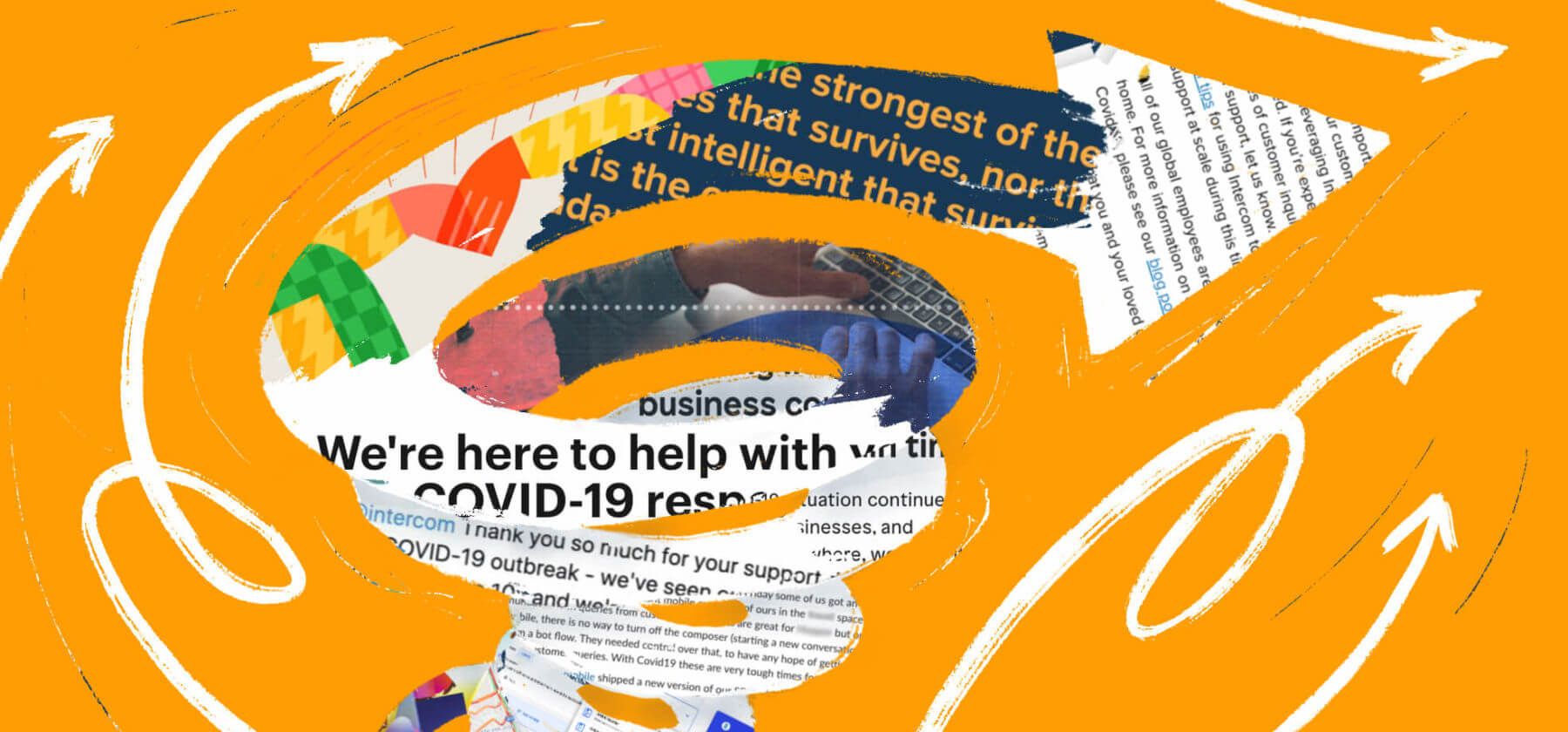
Everything just changed: How to keep your customers at the center during turbulent times
Main illustration: Susan Payne
As marketers, our job is to understand our customers – their hopes, their wants, their needs – and then communicate the value of our product in the context of their lives. But what do you do when everything is turned upside down?
At SaaStr Summit, I spoke about how businesses can adapt during these uncertain times by focusing on customer impact. I shared how we’re navigating these big changes, from the immediate impacts on customers, to the implications for our marketing and product plans, and, finally, to our customer communications strategy.
You can check out my full slide deck and the blog post below.
Embracing a philosophy of change
One of the internal mantras we’ve embraced – one that’s a little cheesy but very relevant – is about the importance of adapting in order to survive. Reflecting on Charles Darwin’s Origin of Species, business scholar Leon C. Megginson wrote, “It is not the strongest of the species that survives, nor the most intelligent that survives. It is the one that is most adaptable to change.”
The situation we face in front of us is changing on a daily basis and, frankly, it will continue to change over the coming year or even two years. It is not a momentary hiccup where we can say, “Okay, there’s a new normal,” and adapt our plans just once.
“The question I am constantly asking is, how do we adapt to the changes happening in our customers’ lives?”
This philosophy of change is now one that we need to hold close and apply every single day at work. The question I am constantly asking is, how do we adapt to the changes happening in our customers’ lives? The answer isn’t in a specific example but the approach you take to doing business. The situation is changing so fast and so regularly and, as an organization, you need to do the same.
Deal with the immediate impacts on customers first
The very first thing that many businesses, ourselves included, recognized we needed to do was to communicate our business continuity plans. With all the stressors your customers are currently dealing with, worrying whether your business will continue to operate should not be one of them.
Take early and decisive action
At Intercom, we acted early and as decisively as we could. On March 5th, ahead of the global stay-at-home orders, we began encouraging our employees to work remotely, so we could help protect them and their loved ones and, on March 13th, we made it mandatory. In all my time working in marketing and navigating situations where crises have emerged, the ability to take early and decisive action has been critically important.
Communicate proactively and mindfully
But just as important as taking these kinds of actions is proactively communicating it to your customers in a mindful way. By now, we’ve all received those hundreds of COVID-19 emails from services that we maybe used once 10 years ago. Many of the ones that I’ve received are from companies who are using those emails as opportunities to sell.
What’s key isn’t pushing your product but instead telling customers, “Hey, we’re here. This is how you can get in touch with us if you need support,” along with any crucial details about how your business has been impacted.
“What’s key isn’t pushing your product but instead telling customers, ‘Hey, we’re here. This is how you can get in touch with us if you need support’”
For us, communicating proactively and mindfully looked like a couple things. For one, we didn’t want to spam all our users and so we used our own data in Intercom to identify dormant users and took them off the list. We also used in-app messages to avoid exacerbating already high levels of email fatigue. It’s the little things that you do which ensure your message is received by customers in non-spammy, meaningful ways.
Add value, not just noise
In these uncertain times, it’s important to think about how you can add value for your customers. At Intercom, we’re fortunate to have a product that our customers can use to communicate with their customers – albeit now in slightly different ways. We have customers, for example, who have seen 10 times their normal support volume in Intercom.
In our case, creating value for our customers meant sharing best practices for managing their COVID-19 response. Our product education manager Phil Byrne – you might recognize him from our product onboarding 👋– created a video that distills our advice on how to handle high support volume in Intercom. For businesses in similar positions, leveraging product education can be a powerful way to help customers through this time.
Step up and help out where you can
For businesses who are in a position to help, we should thoughtfully consider our social responsibility. We are all part of a community of people, of companies, and I have been impressed by the number of organizations stepping in to help where they can.
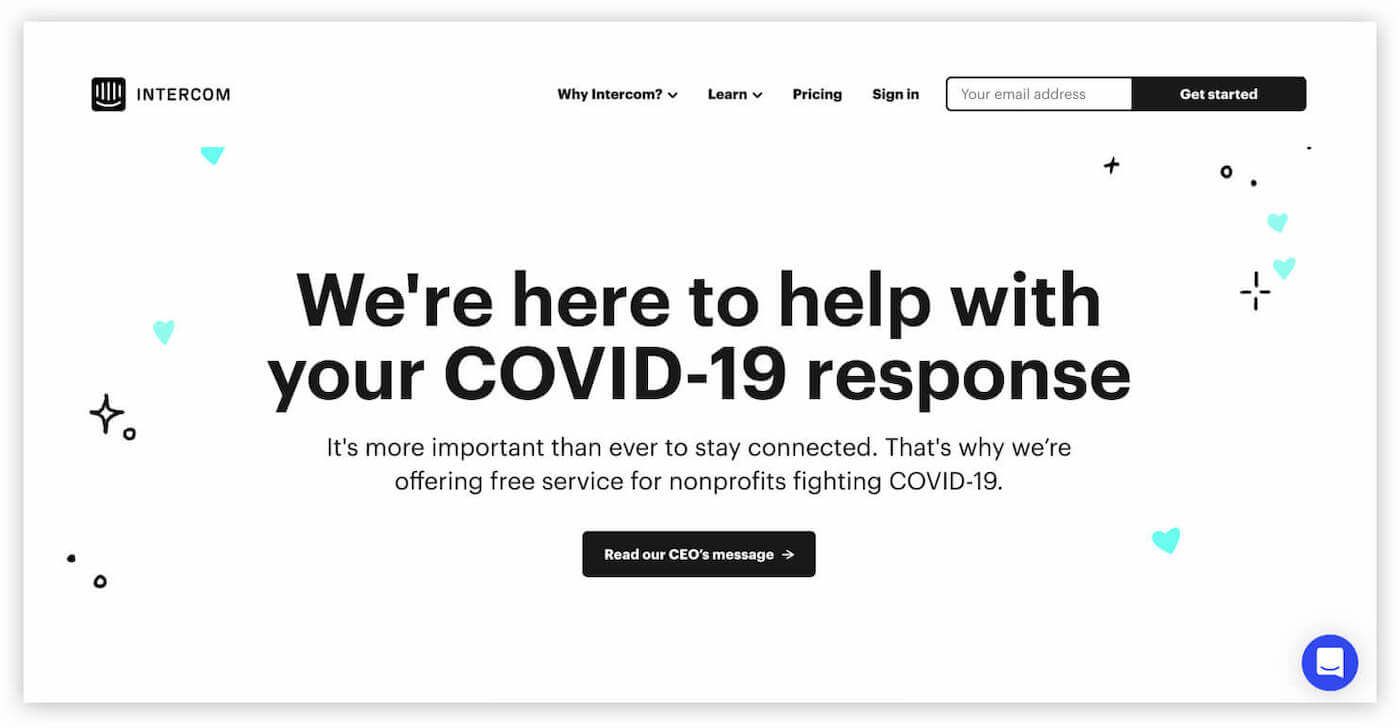
At Intercom, we’re offering our platform for free to any group fighting COVID-19 and its impact on society. We believe it’s the right thing to do. Take, for instance, the government of Andorra who are using our Messenger to collect critical health information and educate their citizens about the disease, and direct them to available resources.
Rethink your product and marketing plans
Once you’ve dealt with the immediate impacts on your customers, it’s time to consider what the changing landscape means for your product and marketing plans. Your customers, their behavior, and their needs should drive everything you do. And if your customer’s context has changed, as it has so dramatically in the current situation, then your strategy must evolve as well.
Thoroughly understand what’s changed
You cannot start making decisions until you wrap your head around how and in what ways customer behavior has changed. For example, people are working from home at increased rates, video conferencing apps are seeing record downloads, and commuter traffic has plummeted. If you have radio advertising in your plan, you should expect its effectiveness to drop considerably. Similarly, if you have events planned for this year, you should look to virtual alternatives.

At Intercom, we surveyed our customers and the market at-large and worked with our sales team to understand what’s going on in our customers’ minds. What pain points are they facing? How are they trying to solve them? Where can Intercom be helpful?
Adjust your product strategy and roadmap
We’ve used these inputs to re-prioritize our product strategy and roadmap. Early on, for instance, we made an update to our mobile functionality to give a hard-hit customer in the travel sector even more control over their chatbots. While we had that feature planned for future quarters, we pulled it forward and built it in just two business days. When you have companies seeing 10 times their normal support volume, what you ship and when really matters.
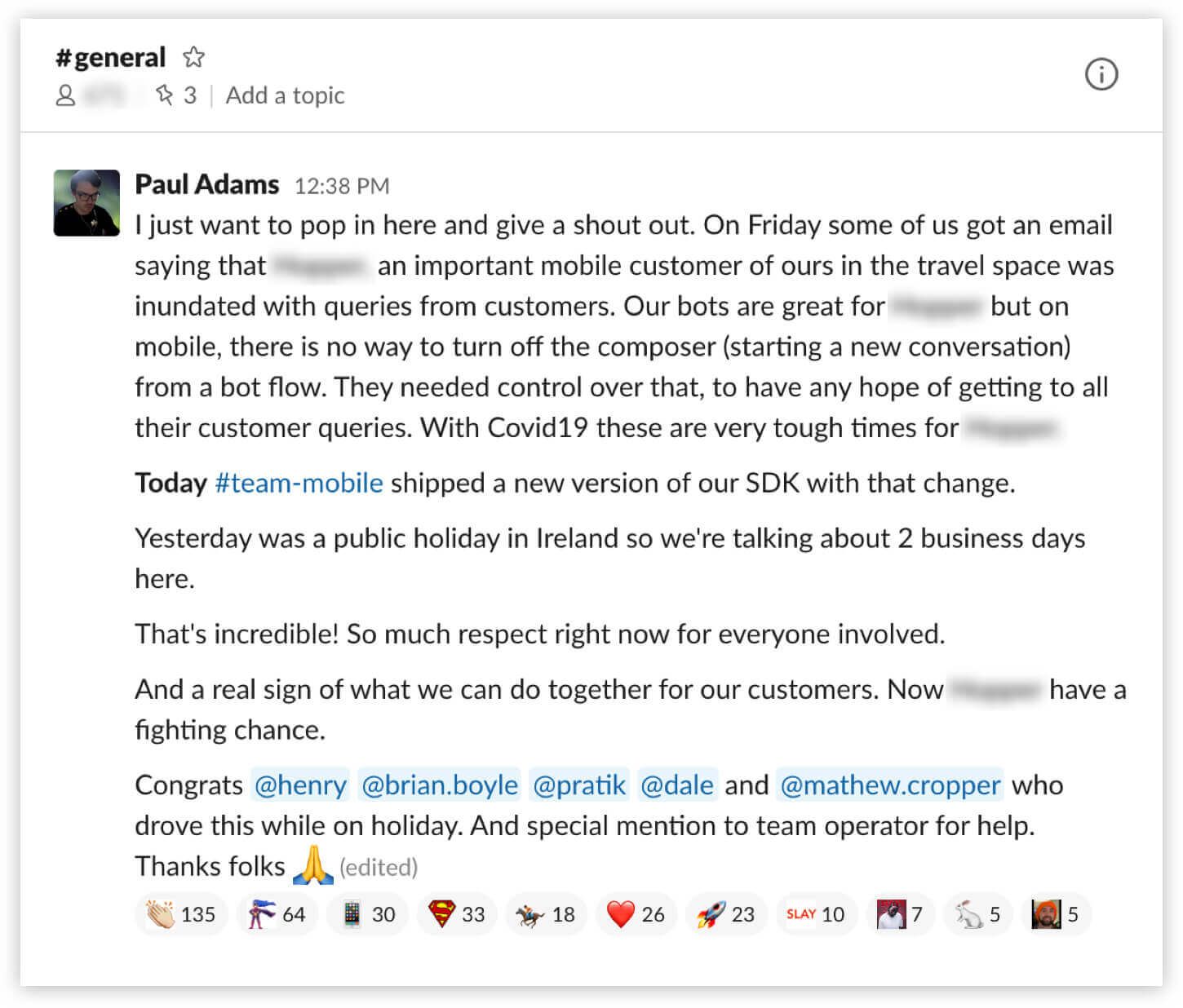
Review every line on your marketing plan
There’s not a single line on our marketing plan that has not been adjusted to reflect the current situation. It’s a lot of work, but it’s critical that we do it. At Intercom, we’ve had to pause much of our marketing because simply plowing forward with it would have been tone deaf.
We had a big campaign set to go live in a few weeks and we’ve pushed it back until September. We’ve changed our content marketing strategy to prioritize content that reflects the current challenges our readers are facing. Even the copy on our homepage has been updated. We want to make sure we’re speaking to what’s happening during these times.

An example of adapting quickly from Airbnb
One of the companies that has done this brilliantly is Airbnb. With their core revenue heavily impacted by the pandemic, Airbnb quickly spun up Online Experiences. They’re making virtual travel possible, providing their users with a way to explore the world and their hosts with another source of income. Just last week, I listened to my wife and mother-in-law sing and dance with drag queens in Portugal while learning how to make sangria.
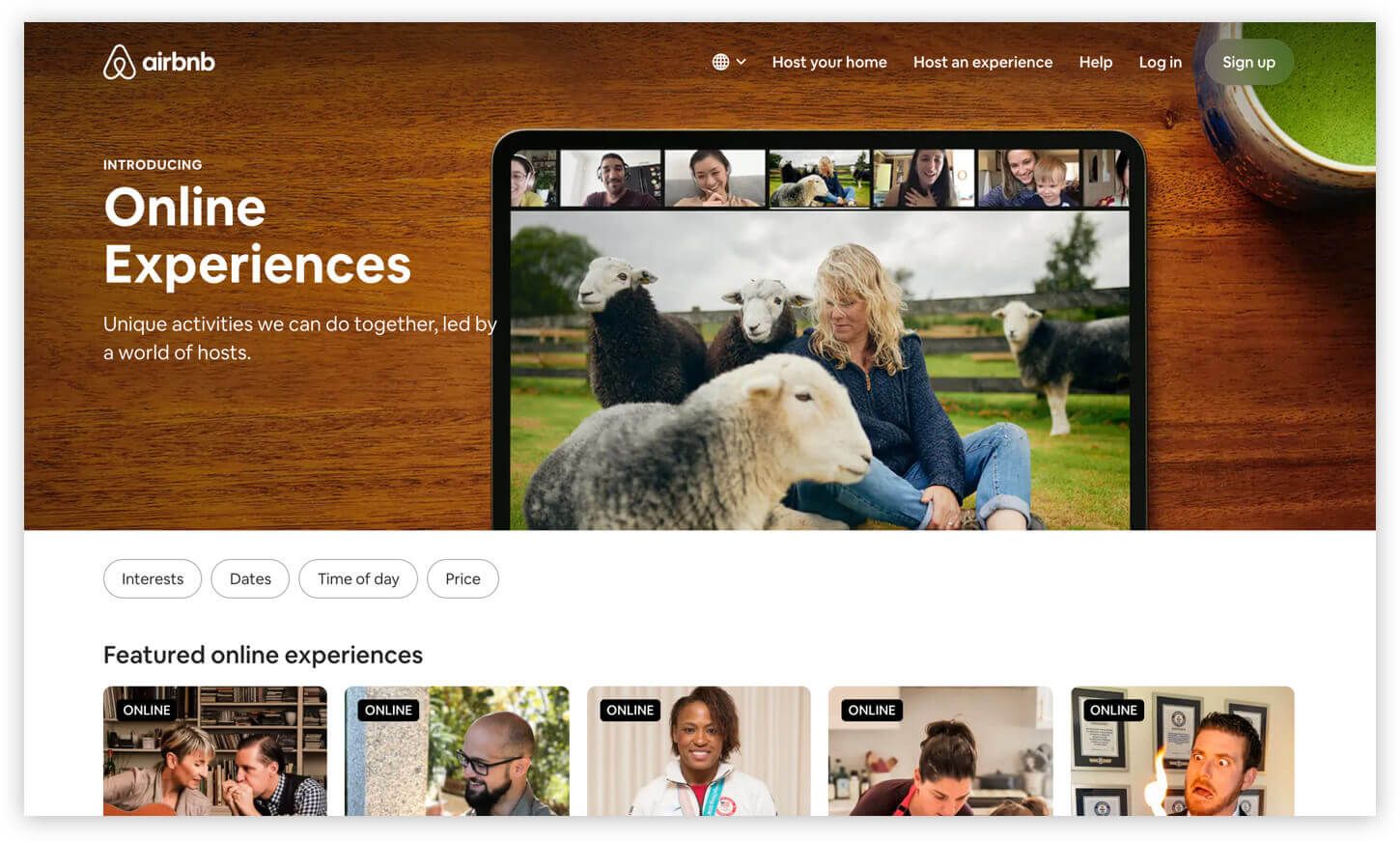
Put a robust communications strategy in place
It should be clear that the need for customer communication has increased dramatically – both to understand what customers expect and to update them on changes you’re making. But right now, the rules of engagement can be a little murky. How do you communicate with customers when your business and their businesses are going through so much change?
We know customers are turning to companies for guidance more than ever before. Looking at our own product, we can see conversations with end users in Intercom have hit a number of all-time highs since February. It’s validated by what we’re hearing in the market – our survey of 400 support leaders found 47% of support teams have seen an increase in inbound queries.

At Intercom, we think of our customer communications strategy as having three parts: proactive, self-service, and human. With each of these, our goal is to ensure customers get what they need as quickly as possible and through the appropriate channels. Here are examples of how we and our customers have put this communications strategy into practice.
Proactively anticipate customer questions
We always start with proactive communication – how can we identify questions our customers are going to have and preempt them? One way we did this is by having our COO Karen Peacock and our Global Director of Customer Support Kaitlin Pettersen message customers to reassure them that we’re here to help and share how they can use Intercom to address the current situation.

Similarly, our customer ShipBob, an ecommerce fulfilment platform, is using in-app messages to notify their merchants of changes to their operating procedures. This way, their customers have the most important information they need right there when questions could arise.
Automatically give customers what they need
Invariably, there will be customer issues that you can’t predict and won’t be able to get in front of proactively. In those cases, we look to self-service and, specifically, to bots to get customers the answers they need, immediately. I like to think of self-service like a bank ATM – when people just need to get cash out or deposit a check, they want the fastest, most seamless option.
“We look to self-service and, specifically, to bots to get customers the answers they need, immediately”
Our customer accuRx, a healthcare communication startup, is using Resolution Bot and Custom Bots to handle a massive increase in inbound support queries. They are one of the companies seeing 10 times the support volume and, with the help of chatbots and automation, are able to continue effectively resolving customer questions without draining their team.
For our customer GetCalFresh, a service run by Code for America, Resolution Bot is enabling them to handle four times the number of weekly food stamp applications in California, from 1,500 to more than 6,000 per day. Chatbots are enabling them to instantly help local residents verify their eligibility and complete the application process.
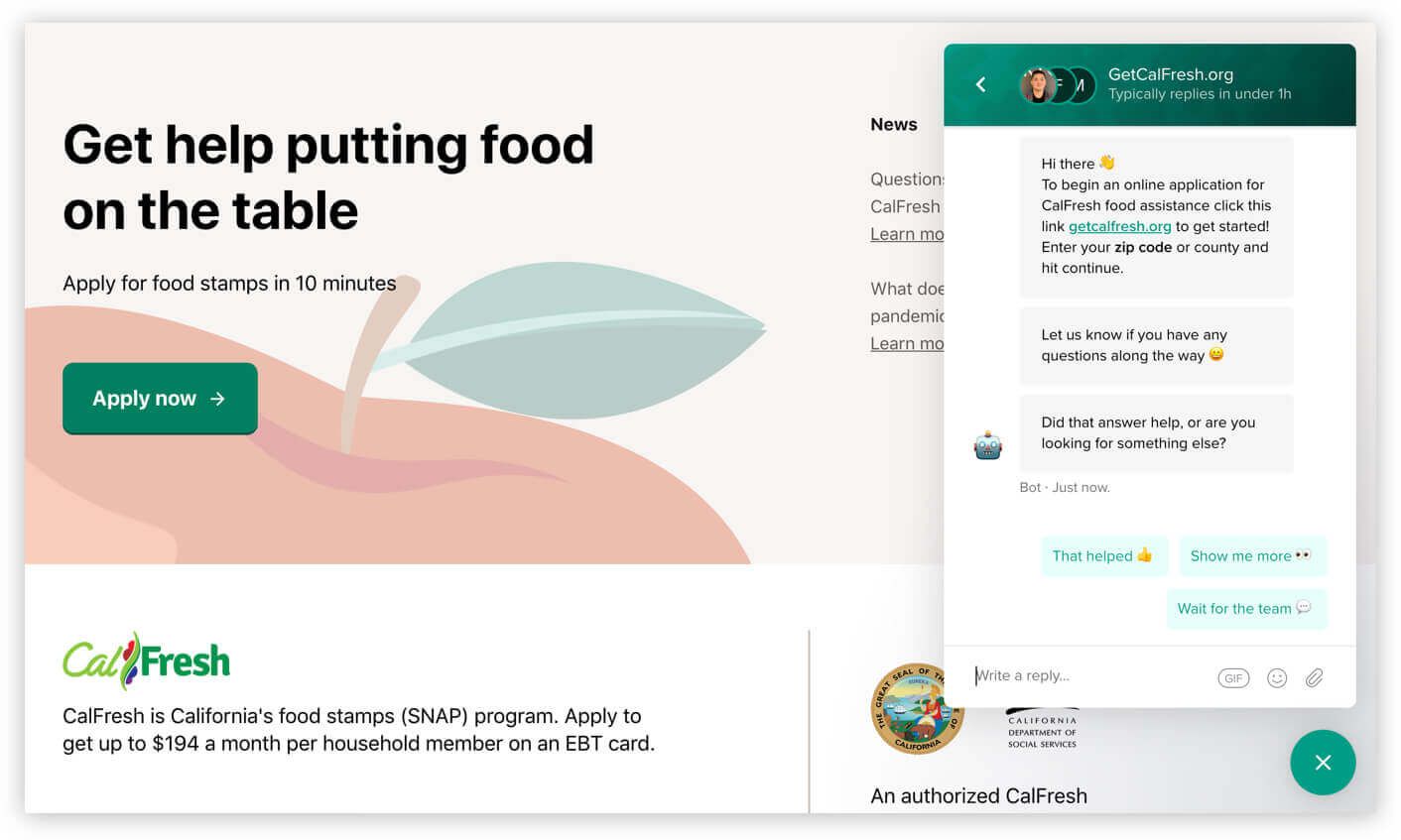
Be human in one-to-one conversations
In every communication strategy, there should absolutely be a place for human, one-to-one interactions. Especially now, many customers are facing difficult situations and, for us, that’s where conversations with our support leaders and reps comes into the picture. To return to my bank analogy, these are the times when you want to speak to a banker or a client adviser.
Remote work platform monday.com is empowering their Customer Experience team to work with customers who are requesting financial assistance. By responding to these kinds of requests with empathy and understanding, monday.com is deepening their relationships with customers, and they have received tremendous gratitude in return.
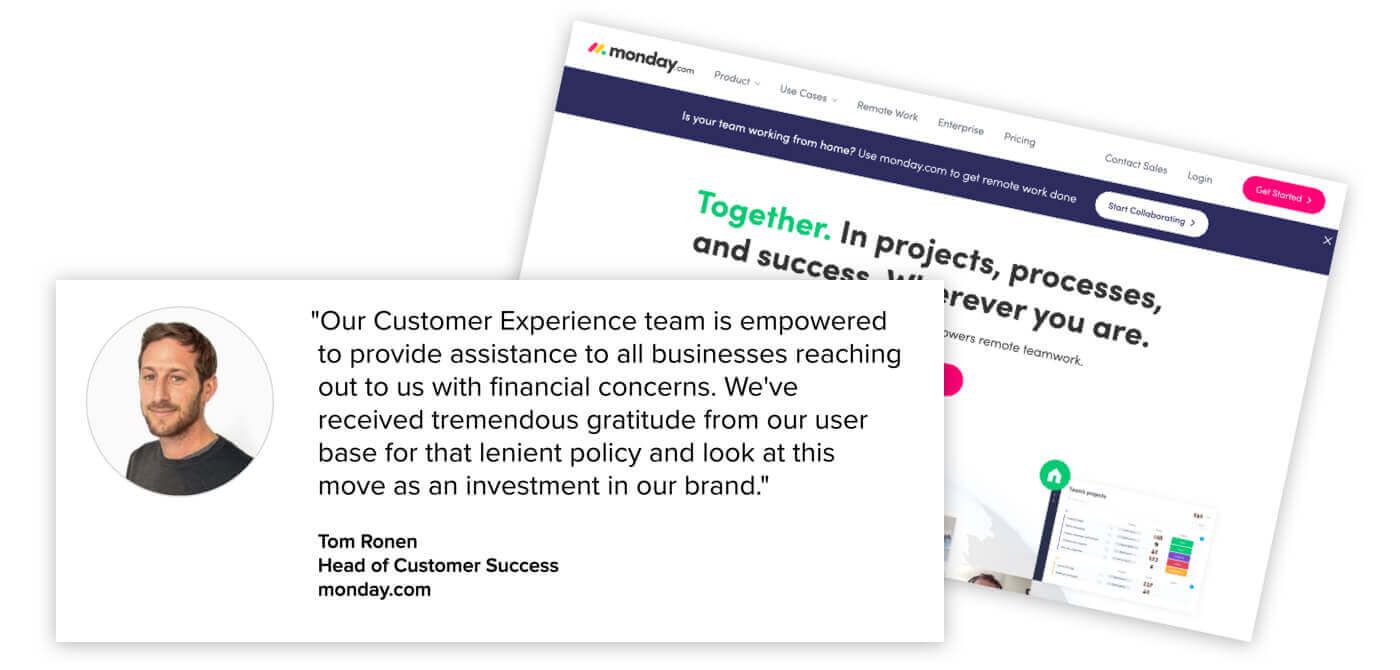
Change is the only constant
Throughout the last few weeks, the biggest lesson we’ve learned has been to expect change at every turn and, as a result, plan to constantly adapt what we’re doing. What that comes down to is deeply understanding our customers’ new context, creating space to integrate these insights into our product and marketing plans, and opening up clear lines of communication back to our customers.







